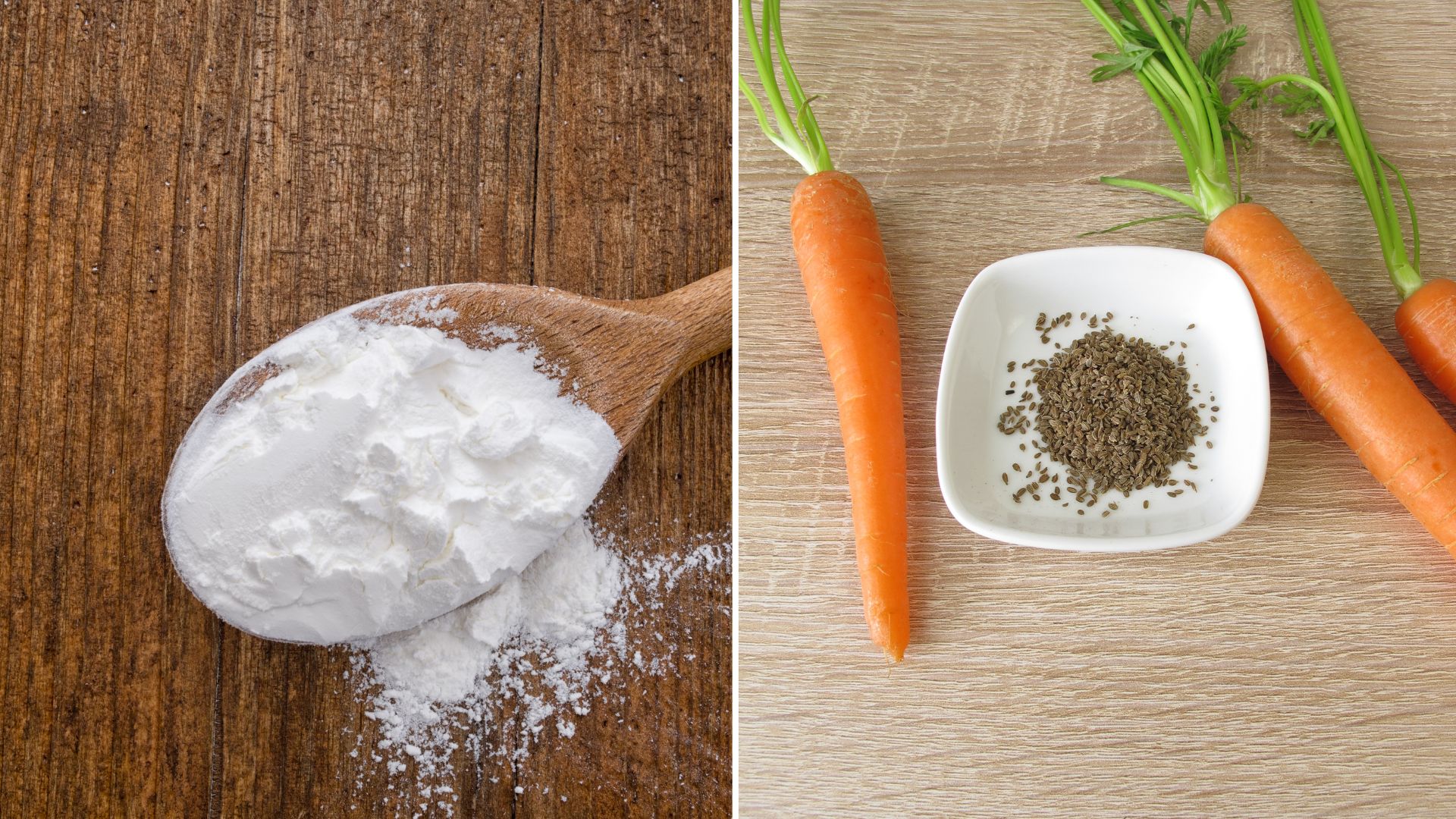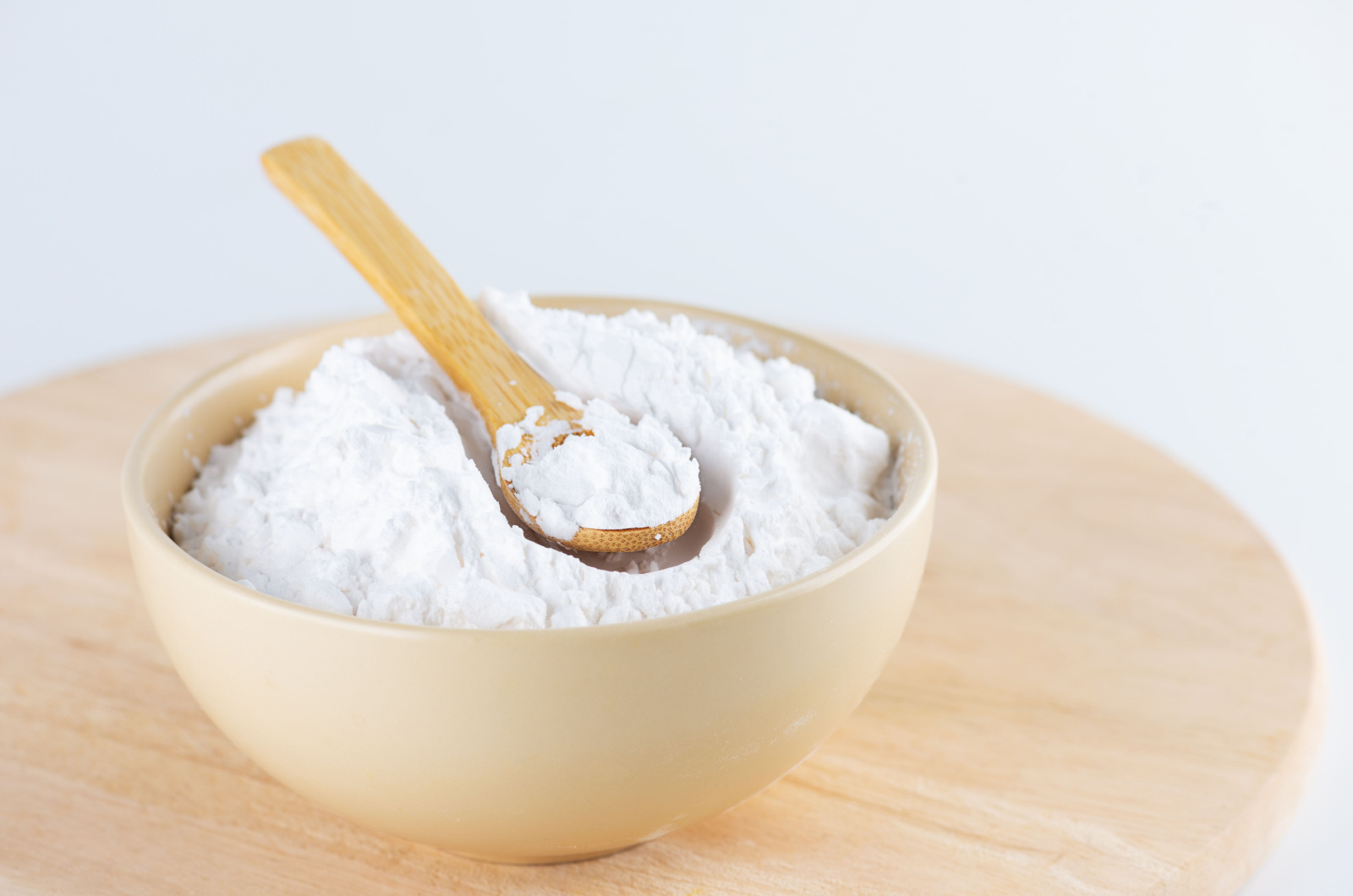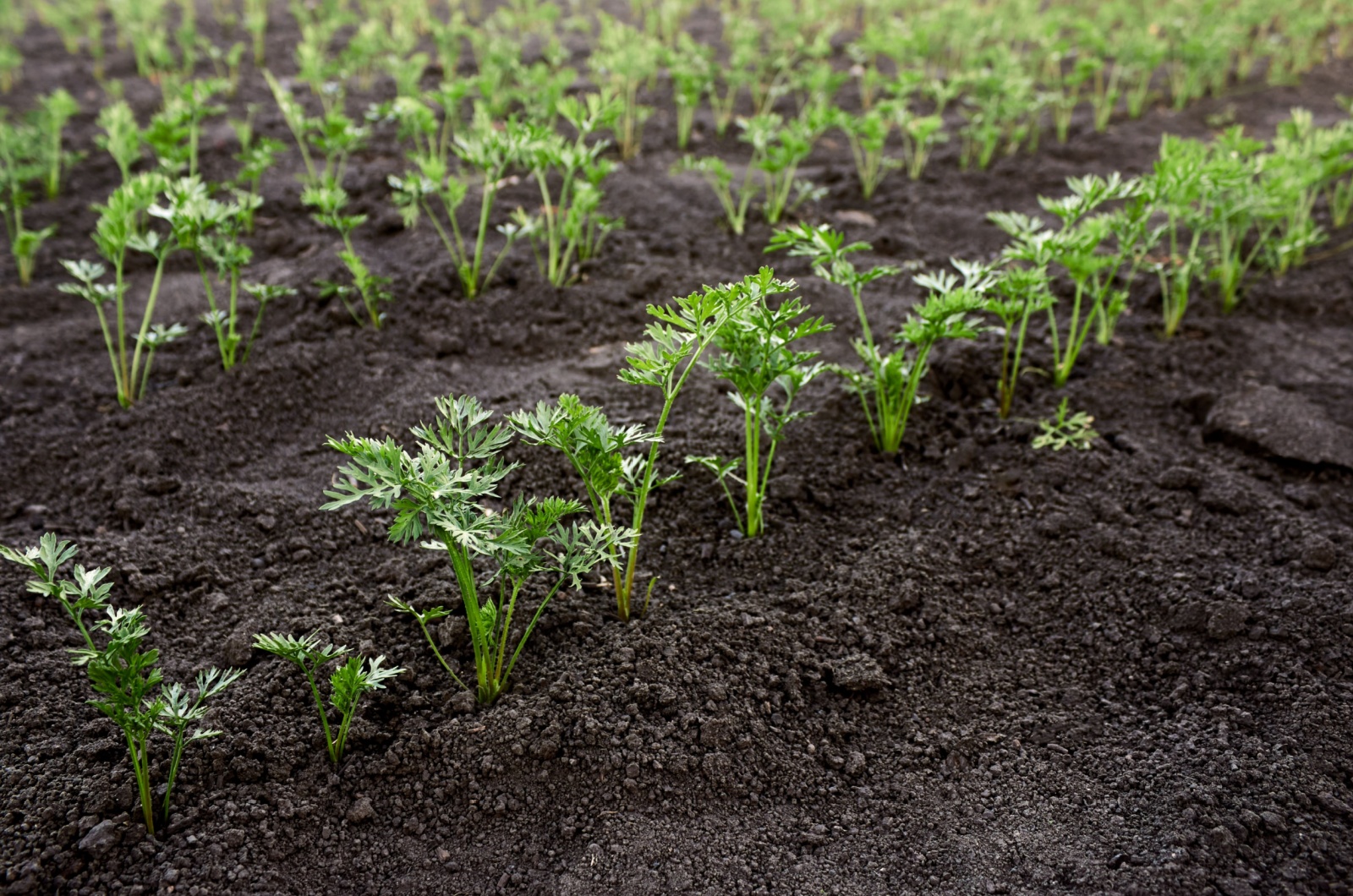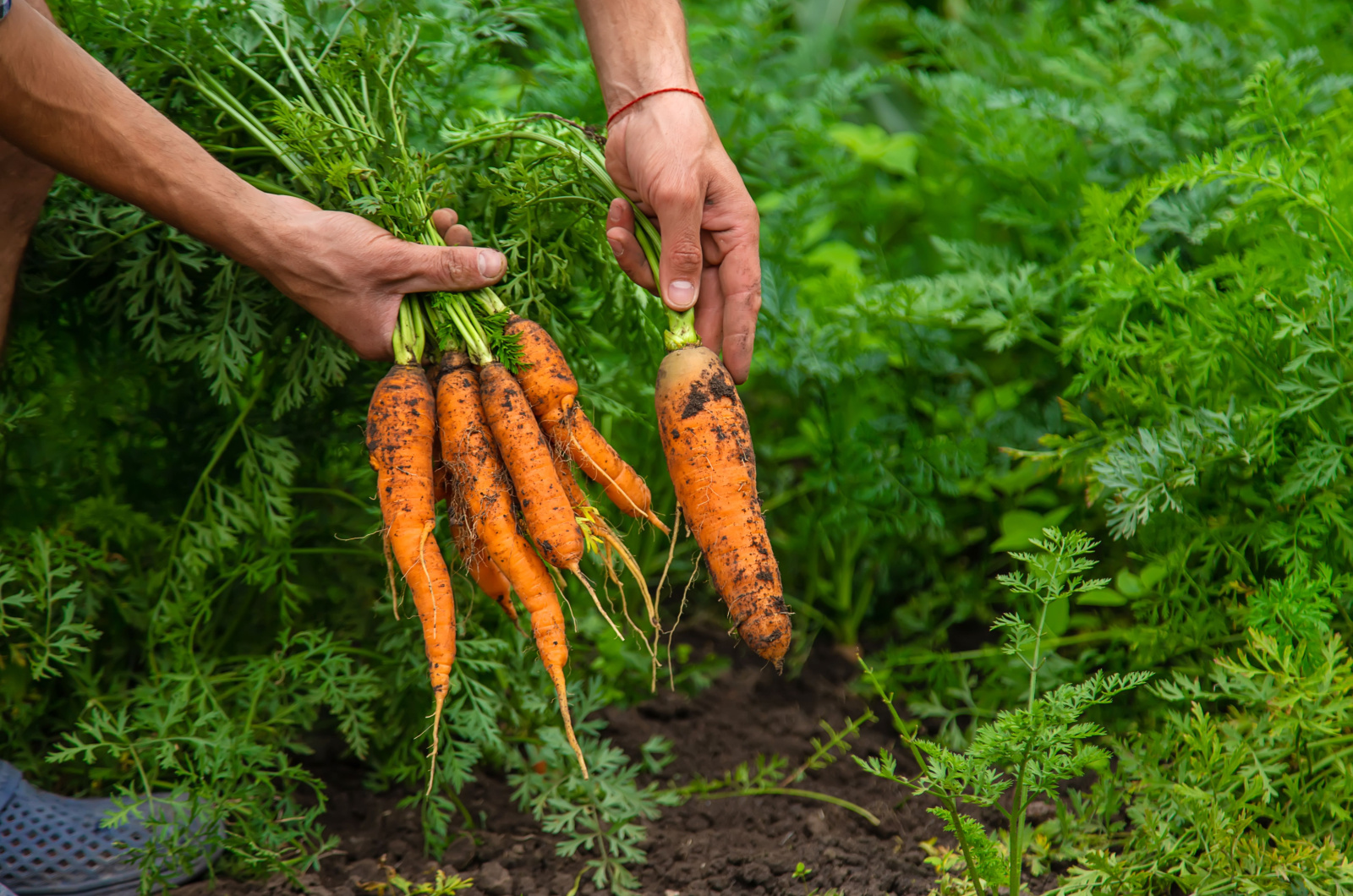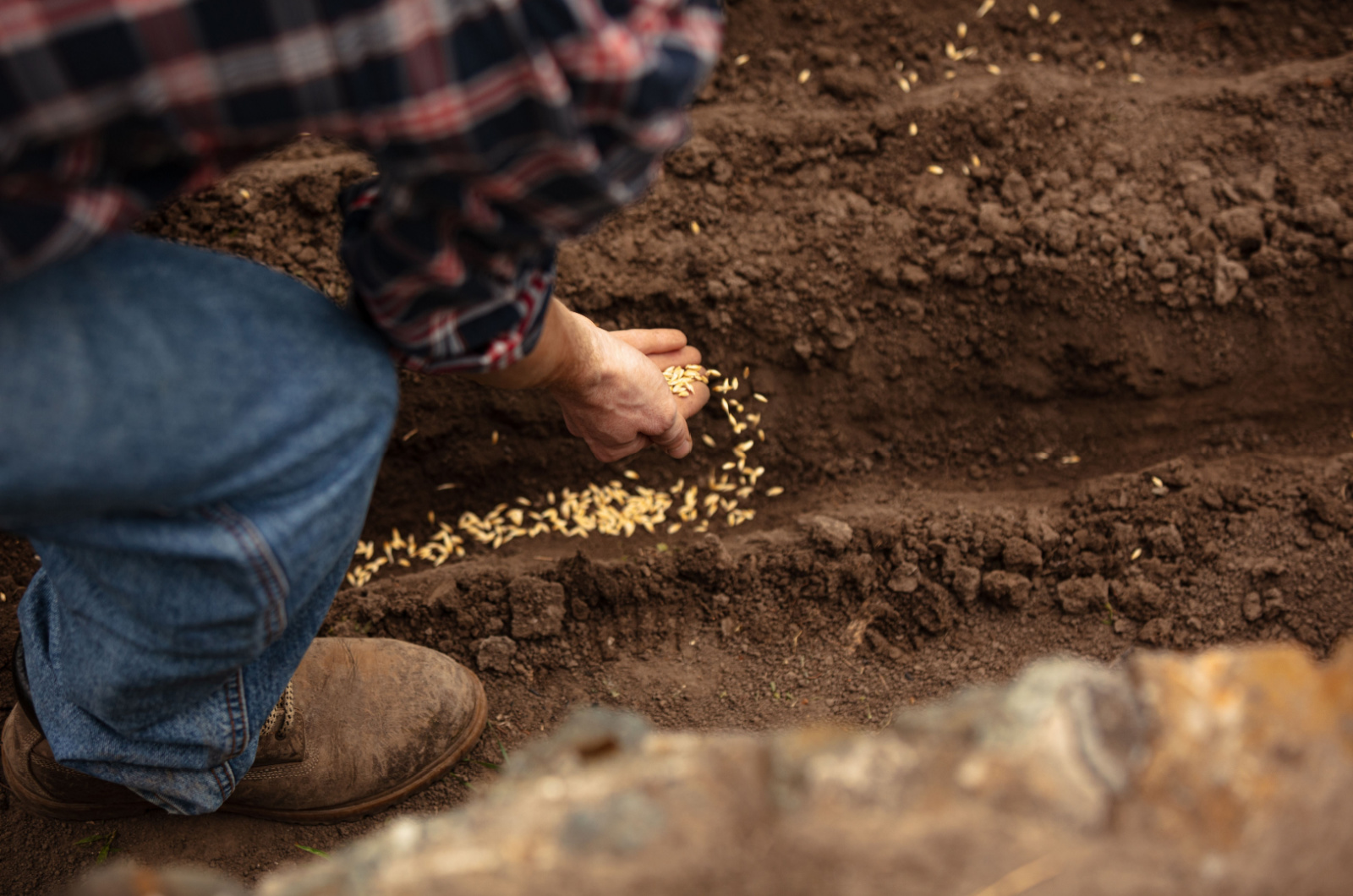Carrots are the easiest vegetables to grow and one of the most popular crops among beginners and experts alike.
But what’s so bothersome about them is that we nearly always sow them too closely together and have to thin them after they sprout.
Perhaps you want to forget about this additional chore or you’re simply a sucker for evenly spaced rows!
Don’t worry! I’ve got you covered with this neat gardening hack that will be the end of the thinning process once and for all.
What is it? One word – cornstarch!
Find out more about it below!
Cornstarch Hack For Planting Carrots
I would never have thought that cornstarch and carrots go hand in hand when gardening. Cooking? Sure! But gardening…
Well, it is a great way to neatly space carrots and avoid thinning them after they germinate.
All you’ve got to do is mix cornstarch and water until you get a thick paste and combine it with your seeds.
Then, put the paste in a piping bag and squeeze it out into the holes or simply use a spoon and drop a small amount of it in.
The thick cornstarch mixture will ensure the seeds aren’t crammed too closely together, and you’ll get evenly spaced seeds and no thinning afterwards.
And the best part is that you can use this hack for any gardening method – in vegetable plots, containers, or raised bed gardens.
Benefits Of This Process
It is quite difficult spacing carrot seeds neatly, even if you have a steady hand. The seeds are tiny and you’re bound to add too much in a hole or two. And even if it doesn’t happen, you’ll have to take your time to space them evenly.
With the cornstarch hack, you can forget about all that. This method is all about time-saving, efficiency, accuracy of seed spreading, and the ease of it all.
It will also reduce the overcrowding of carrot seeds and reduce the need of thinning once they sprout, meaning less work in the future.
Your carrots will have enough room to develop their tubers and not one plant will suffer.
Another benefit of the cornstarch mixture is that it offers a protective layer to your carrot seeds, keeping them in place and preventing winds from blowing them away or pests nibbling on them.
And, of course, the milky color of this paste allows you to see which holes you’ve already filled, so there’s less risk of seeding them again and overcrowding that way.
Some gardeners even claim that this mixture helps to kill weeds, but I haven’t noticed any difference when I tried it out.
4 Tips For A Successful Carrot Harvest
Using the cornstarch garden hack will certainly ensure neat spacing between carrots, but it won’t do much for your harvest.
If you want to increase it or simply get as many carrots as you can, here are some tips that can get you there.
Of course, you can always grow carrots hydroponically and maximize your yield that way.
1. Soil Preparation
Carrots are quick-growing vegetables you can plant in September and are incredibly easy to grow, but you have to be careful about the soil you grow them in.
These root crops need well-drained, loose, and loamy substrate to thrive. Remove any rocks, logs, and debris in it before planting so that the delicious roots can grow without any obstacles.
Additionally, make sure to break or remove soil clumps so that carrots can sprout easily.
2. Mix Carrot Seeds And Cornstarch Before Planting
The cornstarch hack is a great way of helping your carrots thrive with minimal work, but you need to ensure the paste isn’t too thick or it could impede sprouting.
When making this mixture, use a teaspoon of cornstarch for every tablespoon of seeds. This will ensure a neat coating and allow for even sowing.
3. Thinning Seedlings After Sprouting
While the cornstarch sowing method should greatly help and minimize the need for thinning, you might still want to remove weaker plants and ensure more growth for larger carrots.
It’s good to understand the carrot growth stages for this purpose because you should thin the seedlings as soon as they appear. Understanding the lifecycle of this veg can prepare you for that and tell you exactly when you can expect it.
4. Keeping The Soil Moist
And finally, make sure to keep the carrots growing medium consistently moist. This will help them grow, make them easier to thin and collect, and keep the roots crispy and not gummy.
Ensuring the substrate is moist is crucial during the germination process because the seeds won’t sprout if they dry out even for a couple of hours.
Of course, this doesn’t give you a free pass to overwater your carrots. Irrigate them slowly, and give them about an inch of moisture per week when young and 2 inches when they mature.
Remember, too much hydration will cause the roots to rot and you’ll get a poor harvest.
When To Plant Carrots
All this talk about spacing carrots and increasing your yield is fine, but how can we do all this if we don’t know when to plant them?
These veggies are cool-weather crops, which means you can plant them in early spring or fall. Or you can grow them in a greenhouse all year long, provided you cool it enough.
When planting them in spring, sow the seeds about 2 weeks before the last spring frost. And for fall planting, plant your carrots about 10-12 weeks before the first fall frost date.
Additionally, the perfect soil temperature for germinating carrots is between 50°F and 80°F, but always check the back of the seed package to give your specific variety everything it needs.

